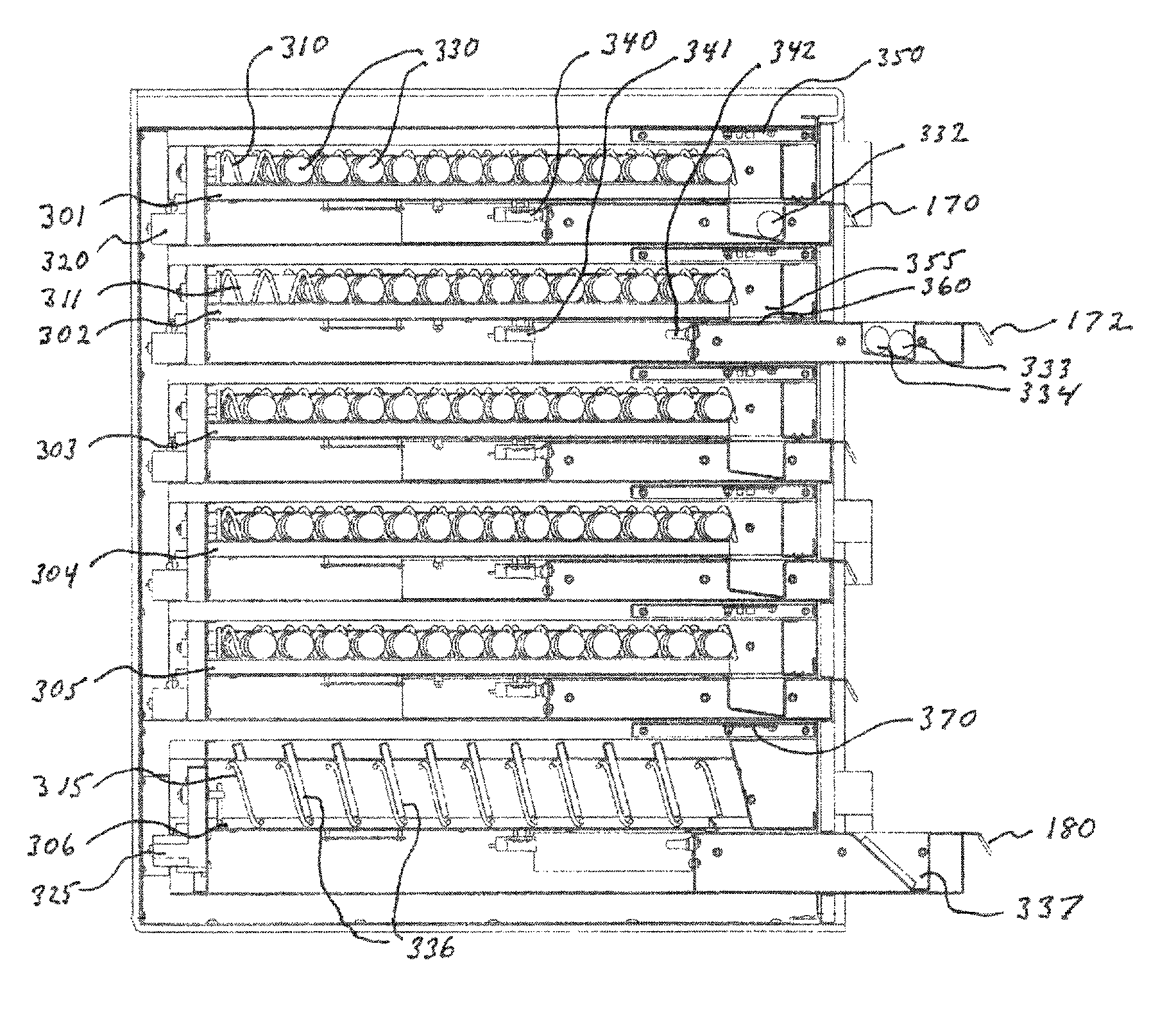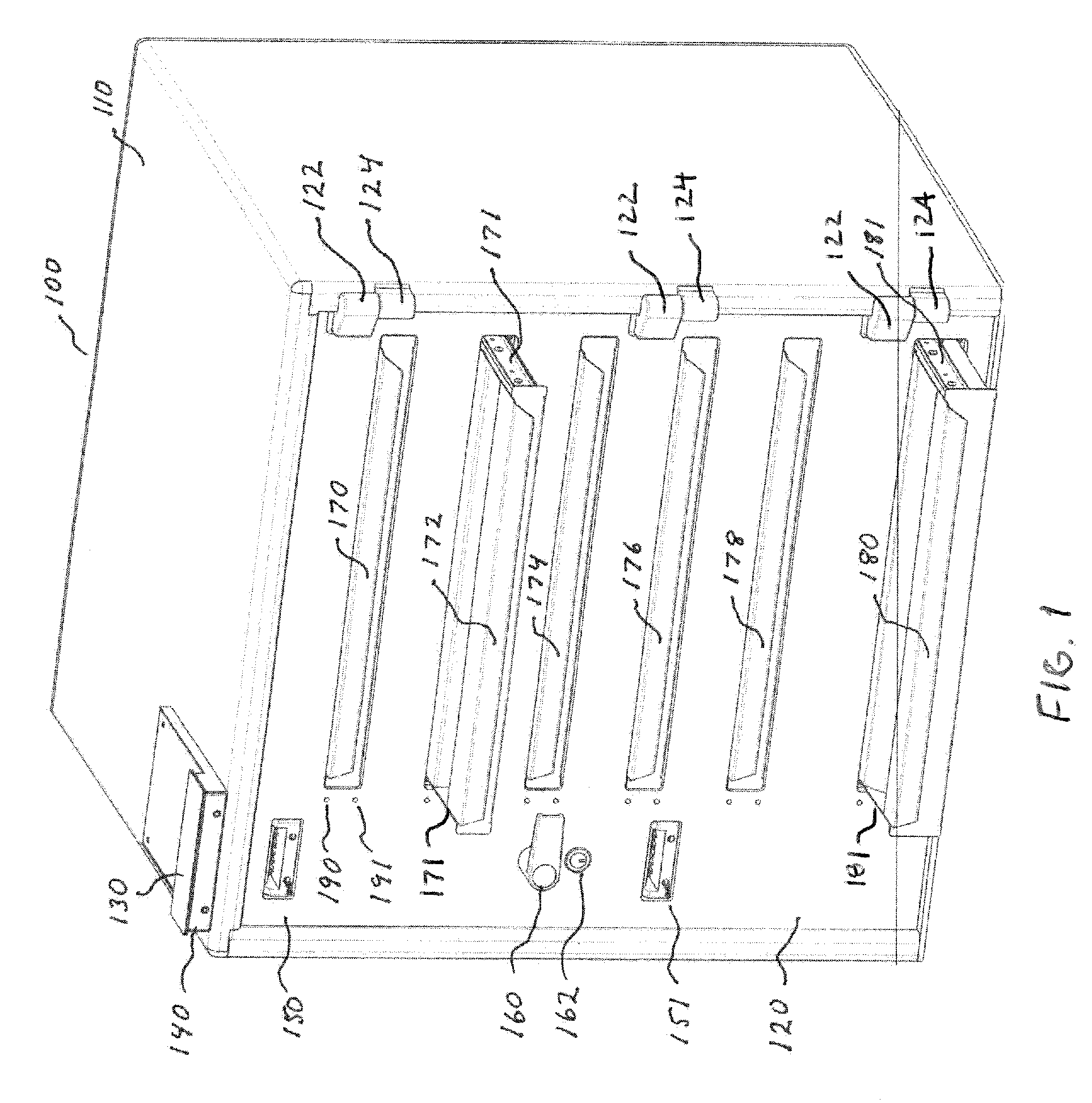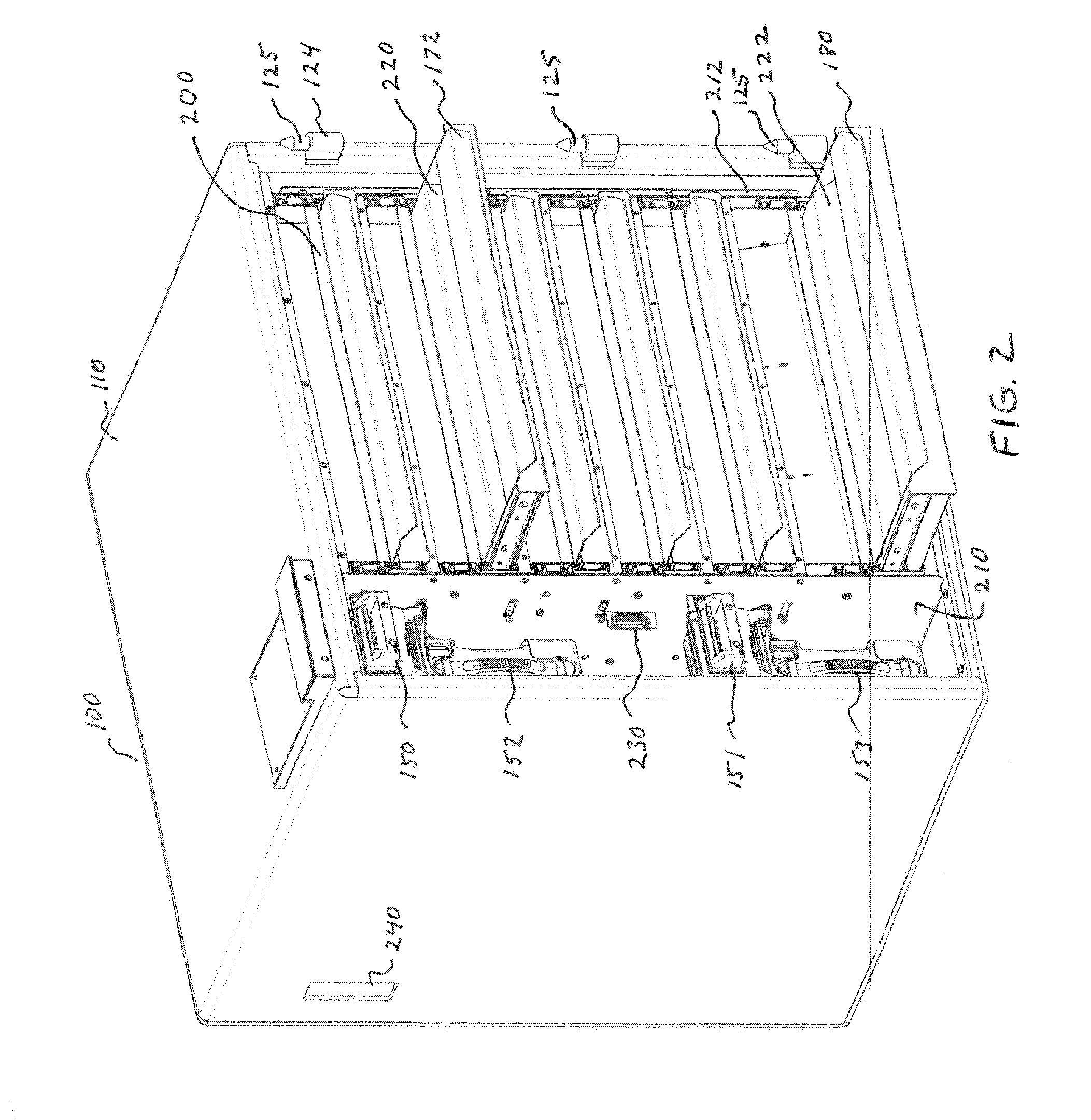Coin and bill dispensing safe
a safe and coin-based technology, applied in the direction of coin-freed apparatus, coin dispensers, instruments, etc., can solve the problems of low efficiency of coin dispensing personnel, and inability to ensure the proper loading of dispensers, so as to minimize the inventory of money being stored, optimize the amount of money, and save costs
- Summary
- Abstract
- Description
- Claims
- Application Information
AI Technical Summary
Benefits of technology
Problems solved by technology
Method used
Image
Examples
Embodiment Construction
[0067]FIG. 1 shows an electronic coin and bill dispensing safe 100 including the safe housing 110 and safe door 120. In one configuration of safe 100, the safe housing 110 is made of approximately ¼ inch steel and the safe door 120 is made of ½ inch steel. The safe is preferably a Class B safe. Of course, other materials and gauges can be used as desired or required for a particular context or environment of use.
[0068]A user interface is provided through a keypad and display module 140 contained in user interface assembly 130. The material used for the assembly housing is also steel but of a much lighter gauge as a breach of the interface assembly does not allow access to the contents of the electronic safe 100. The keypad and display can both be of any suitably robust type. In a presently preferred embodiment, the keypad is a combination of a membrane overlay with conductive pads attached to a printed circuit board with conductive traces such that a depression of the membrane overl...
PUM
 Login to View More
Login to View More Abstract
Description
Claims
Application Information
 Login to View More
Login to View More - R&D
- Intellectual Property
- Life Sciences
- Materials
- Tech Scout
- Unparalleled Data Quality
- Higher Quality Content
- 60% Fewer Hallucinations
Browse by: Latest US Patents, China's latest patents, Technical Efficacy Thesaurus, Application Domain, Technology Topic, Popular Technical Reports.
© 2025 PatSnap. All rights reserved.Legal|Privacy policy|Modern Slavery Act Transparency Statement|Sitemap|About US| Contact US: help@patsnap.com



